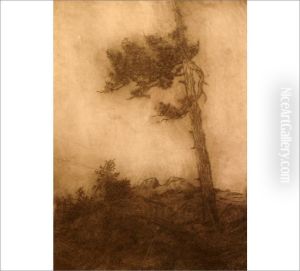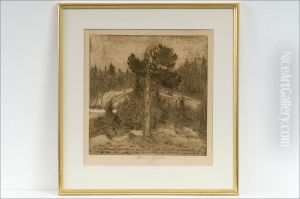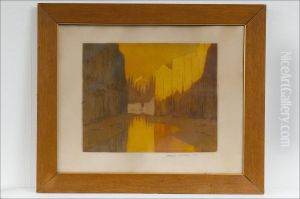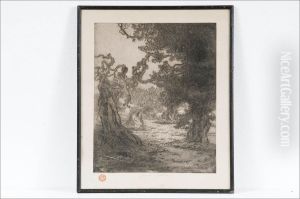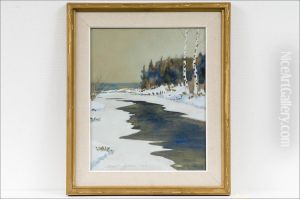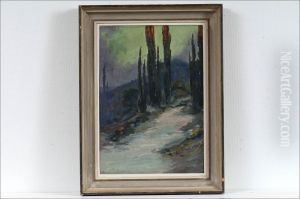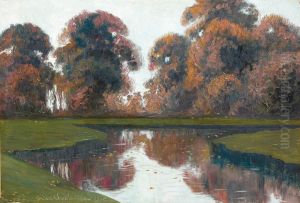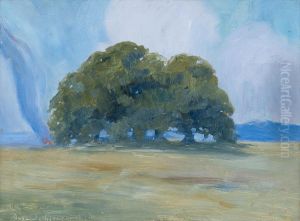Harald Gallen Paintings
Harald Gallen, more commonly known as Akseli Gallen-Kallela, was a Finnish painter who played a pivotal role in the development of a national identity for Finland through his art. Born on April 26, 1880, in Pori, Finland, Gallen-Kallela was originally named Axel Waldemar Gallén but changed his name to reflect a more Finnish identity as part of the growing nationalist movement in Finland, which was then a Grand Duchy under Russian rule.
Gallen-Kallela's early education was in Helsinki, where he attended drawing classes at the Finnish Art Society. He then moved to Paris to study at the Académie Julian. His early works were primarily influenced by naturalism and realism, which were predominant styles in Finnish art at the time. However, his style evolved as he began to incorporate elements of symbolism and national romanticism, particularly influenced by the Kalevala, the Finnish national epic. His work 'Aino Myth' from 1891, based on a story from the Kalevala, is a prime example of this influence.
Gallen-Kallela's most famous works are probably his illustrations for the Kalevala, which have become iconic images associated with Finnish culture. He also painted several versions of 'The Defense of the Sampo,' 'Kullervo Riding into Battle,' and 'The Forging of the Sampo,' which reflect his deep engagement with Finnish mythology.
Apart from painting, Gallen-Kallela also worked with other mediums, including stained glass and frescoes, and he played a significant role in the design of the Finnish Pavilion at the 1900 Paris Exposition. His National Romantic style later shifted towards a more expressionist approach, particularly after experiencing the death of his daughter and the trauma of World War I.
Gallen-Kallela left a lasting legacy in Finland, not just through his art but also through his influence on the development of a Finnish cultural identity. He was actively involved in the struggle for Finnish independence, which was achieved in 1917. His home, Tarvaspää, which he designed and built in Espoo, now serves as the Gallen-Kallela Museum, dedicated to his life and work.
Akseli Gallen-Kallela died on March 7, 1931, in Stockholm, Sweden, while preparing for an exhibition. His death was mourned as a national loss, and his life and art continue to be celebrated in Finland and beyond.
